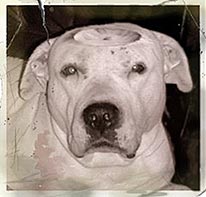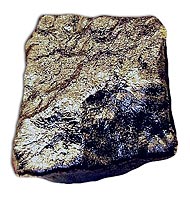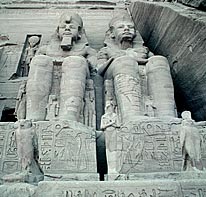
 |
ABOUT THE NAKHLA DOG |
| The Nakhla Dog Beheira is a region of rich farming land located in the middle of the Nile delta. Its densely populated and fertile landscape is dotted with mud huts and every other square inch is under intense cultivation with fields growing a wide variety of crops such as wheat and cotton as well as strawberries, okra and cucumbers. It is perhaps best known for its production of a fine variety of tobacco which is used in huqqah smoking. On the 28th of June, 1911 at nine o'clock in the morning while standing in one of those fertile fields, a farmer by the name of Mohammed Ali Effendi Hakim observed something strange in the skies about his village of Denshal, near Nakhla (40 kilometers south-east of Alexandria). First he heard a "terrific" noise in his field and then looking up he saw that the sky had been streaked with a "fearful column" of white smoke. A dog, which had been there only moments before had been transformed into "ashes in the moment." To be born a dog in the modern Middle East would not, I think it's a reasonable to say, be the luckiest thing in the world. That seems especially so in a country like Egypt where in ancient times dogs had been considered sacred (and were even mummified) but were now, at least since the advent of Islam, thought of as unclean and lowly creatures fit only for hunting and guard duty. But the fate of Hakim's dog would have to be considered an extremely unlucky case of being at the wrong place at exactly the wrong time. Sometime before he crawled out from his resting and venturing out into Egyptian summer heat (that "sometime" being anything between 11 and 1,300 million years before) a massive meteor plummeted into the surface of the planet Mars. Its impact was so great that it launched into space several tons of Martian volcanic and sedimentary material. |
 |
 |
 |
| This material went into orbit around the Sun where it collided with other rocks, broke into smaller particles and got bathed in cosmic radiation. At the time when the fragment of rock that later became known as the Nakhla meteorite broke away from the other material, Hakim's dog's wolf-like ancestors had only just diverged from their fox-like cousins (Mohammed Ali Effendi Hakim's ancestors meanwhile had not yet differentiated themselves from orangutans or gorillas). It was said at the time that the death of the dog was the only fatality ever recorded for a meteorite. It was certainly this angle of the story that led the Egyptian newspaper El Ahali to send a reporter to Denshal to interview the farmer who showed him a greenish fragment covered in pitch. He said that numerous shards had plummeted to earth and buried themselves to depths of up to one meter. The news when it was translated into English prompted a few British scientists, who were residents of Egypt, to visit the strewnfield area. They succeeded in recovering about 10 kilograms of the meteorite. Curiously, none of them visited Denshal or communicated any further with Hakim whose eyewitness account was the very first report of the event. John Ball of the Egyptian Survey Department stated that the meteorite would probably have been lost to science altogether "but for the action of a farmer, Mohammed Ali Effendi Hakim, who communicated a note of the occurrence to the Arabic Newspaper El Ahali." But after discussions via telegram with an official in Denshal, Ball concluded that the dog story was the likely "product of a lively imagination." The debate continues today as to the verity of Hakim’s account and the existence of the dog but one can not escape its reference in virtually every major text and reference from The Catalog of Meteorites to NASA. Did the dog exist? Oh yes, we saw to that a century ago. Apocryphal or not … he existed and he has earned his place among the famous dogs in history. |
| HOME
|||
METEORITES
FOR SALE |||
CONTACT
& ORDERING
|||
SERVICES
|||
COLLECTION |